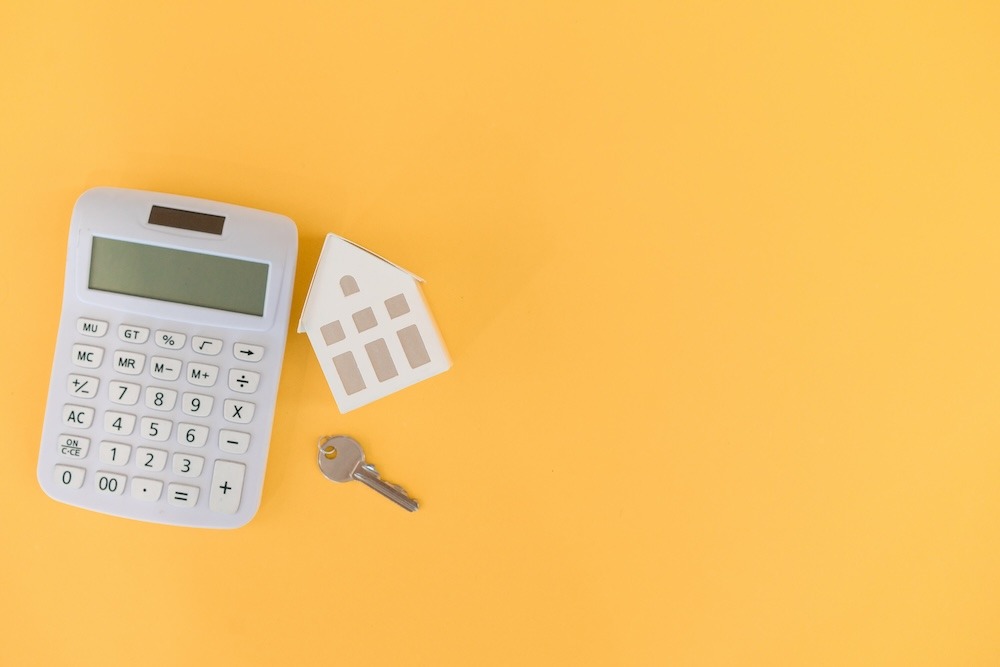Smart Strategies for Refinancing After 45: Your Complete Guide to Securing Financial Freedom
Did you know that over 70% of homeowners over 45 who refinance do so with retirement planning in mind? It’s not just about lower monthly payments...
Whether you're covering unexpected expenses, making a big purchase, or just need extra cash, our personal loans offer simple, flexible funding tailored to your needs.
Simplify your finances with a loan that combines multiple payments into one. Our consolidation loans help reduce stress and keep your budget on track.
Upgrade your living space with financing designed for renovations, repairs, or remodeling. Our home improvement loans help you enhance your home’s comfort, value, and functionality—on your terms.
Explore expert insights, financial tips, and strategic guidance from the Symple Lending team. Our blog is your go-to source for empowering content that helps you make informed decisions on your journey to financial freedom.
Stay up-to-date with the latest press releases, media features, and major announcements from Symple Lending. This section showcases how we're making headlines and driving innovation in the lending industry.
8 min read
Breanne Neely : Jul 27, 2025 12:00:00 AM

Table of Contents
Did you know that over 70% of homeowners over 45 who refinance do so with retirement planning in mind? It’s not just about lower monthly payments anymore—it’s about strategic financial positioning for your future.
Refinancing takes on new significance as you enter the second half of your career. Your decisions about your mortgage now can dramatically shape your financial freedom in retirement, affecting everything from your monthly cash flow to how quickly you can build your nest egg. Refinancing can also help you build equity in your home more efficiently as you approach retirement.
Refinancing means replacing your current mortgage with a new one to get better terms. This process typically applies to your primary residence. The new mortgage pays off your first mortgage, and you begin making payments under the new agreement.
For homeowners over 45, refinancing your home loan can help you save money and secure lower interest rates as you approach retirement. You’re likely thinking about how many working years you have left and how your mortgage fits into your retirement plans. Will you stay in your current home? Do you want to be debt-free by a certain age?
Your refinancing decisions at this stage of life should align with your long-term goals. For example, if I want to refinance my mortgage, I must consider whether it supports my retirement strategy. If you plan to retire at 65, you might not want to reset your mortgage clock with a 30-year loan that extends well into your retirement years.
The right refinancing strategy can help you:

When you refinance your mortgage, your credit history will play a key role in qualifying for a refinance and determining your new loan terms.
Thoughtful refinancing decisions now can support your financial well-being throughout your retirement journey.
Understanding your available options when refinancing your mortgage after 45 is key to making the best decision for your financial future. One popular choice is a cash-out refinance, which allows you to access a lump sum of cash by leveraging the equity in your home. This can be a smart way to fund home improvements, pay for medical expenses, or consolidate high-interest debt, all while potentially securing a better interest rate.
There are several loan programs to consider, each with its own benefits. A conventional cash-out refinance is common for those with strong credit and sufficient equity. If you have an FHA loan, an FHA cash-out refinance may offer more flexible qualification requirements, making it accessible even if your credit score isn’t perfect. Veterans and active-duty service members might benefit from a VA cash-out refinance, often with favorable terms and no mortgage insurance requirement.
Choosing the right refinance option depends on your unique financial situation and goals. Consulting with a knowledgeable mortgage loan officer can help you compare these programs, understand the eligibility requirements, and select the loan that aligns with your needs—whether you’re looking to make home improvements, cover unexpected medical expenses, or simply improve your cash flow as you approach retirement.
When you’re past 45, refinancing takes on different priorities than in your younger years. Here are the main goals homeowners like you typically consider:
Lower monthly payments are often a top priority. A reduction in interest rate by even half a percentage point can significantly decrease your mortgage and loan payments, freeing up cash for retirement savings. Understanding your monthly mortgage payment is crucial for effective budgeting and long-term planning.
Switching from an adjustable-rate mortgage to a fixed-rate loan provides payment stability—especially valuable when planning for retirement on a fixed income. Choosing a fixed rate mortgage can help you lock in predictable payments and protect against future interest rate increases, making it easier to plan for the long term.
Shortening your loan term may increase monthly payments but reduce total interest paid. Many homeowners in their late 40s and 50s aim to be mortgage-free before retirement.
Cash-out refinancing lets you tap home equity for important expenses like updating an aging home, helping with college costs, or consolidating high-interest debt. A cash-out refinance loan or cash-out refi lets you access your home's equity by replacing your current loan with a larger mortgage. Cash out refinancing works by paying off your existing mortgage and providing you with a lump sum of cash. Cash out refinance rates are typically higher than standard refinance rates, so it's important to compare rates before choosing a cash out option. How much equity or how much home equity you need to qualify for a cash-out refinance depends on lender requirements, and how much cash you can access is determined by your loan balance, total loan, and down payment.
Eliminating private mortgage insurance (PMI) can save hundreds of dollars monthly. If your home’s value has increased, refinancing may help you reach the 20% equity needed to remove PMI. Additionally, paying mortgage points upfront can help you save money over the life of the loan.
Alternatively, a home equity line can also provide flexible access to your home's equity for ongoing expenses.
If you're considering a mortgage refinance in your later working years, follow these steps for a smooth process:
Before you move forward with refinancing your mortgage, it's essential to get a clear picture of the true costs. Start by considering the closing costs, which typically range from 2% to 5% of your loan amount. These fees can add up quickly, so factor them into your calculations to avoid surprises at closing.
Interest rates play a major role in determining your new monthly payments and the total amount of interest you’ll pay over the life of the loan. Your credit score and loan-to-value ratio will influence the interest rate you’re offered, so it’s worth checking your credit before applying. Be sure to compare loan terms as well—opting for a longer loan term might lower your monthly payment, but it could also mean paying more interest in the long run.
To see if refinancing makes sense, use a refinance calculator to determine your break-even point—the moment when your monthly savings from a lower interest rate offset the upfront costs. Refinancing into a new 30-year loan can extend your repayment period and increase the total interest paid, even if your rate drops. Carefully weigh the potential monthly savings against the overall cost to ensure you’re making a move that benefits your current and future financial situation.
Qualifying for a refinance, especially a cash-out refinance, depends on several key factors. Lenders will look closely at your credit score, as a higher score can help you secure better interest rates and more favorable loan terms. Your loan-to-value ratio is also critical—most lenders require that you have at least 20% equity in your home for a cash-out refinance, which means your maximum loan amount can’t exceed 80% of your home’s current value.
In addition to your credit score and equity, your income and debt-to-income ratio will be evaluated to ensure you can comfortably handle the new monthly payments. Reviewing your financial situation before applying is a smart move; check your credit report for errors, pay down existing debts if possible, and gather income documentation. Understanding these eligibility requirements and preparing in advance will improve your chances of qualifying for the best rates and loan terms available.
Timing matters for your refinance. Watch interest rate trends and consider your personal timeline—how many years until retirement can affect what terms make sense for you.
Closing costs typically range from 2-6% of your loan amount. Before you commit, calculate whether your potential savings will offset these expenses.
Your credit score directly impacts your rate options. You may qualify for better terms if your score has improved since your original mortgage. Most lenders prefer scores of at least 620, with the best rates going to those above 740.
Be cautious about extending terms. A 30-year refinance might lower your monthly payment, but could mean paying mortgage bills well into retirement. Compare total interest costs against the benefit of lower payments.
Think about retirement budget implications. Will your new payment still be manageable on retirement income? Consider how refinancing fits into your broader financial plan, including Social Security benefits and retirement account withdrawals.
If refinancing your existing mortgage isn’t the right fit, other ways exist to access your home’s equity or manage your finances. Home equity loans and home equity lines of credit (HELOCs) are two popular alternatives. A home equity loan provides a lump sum of cash with fixed monthly payments, making it ideal for large, one-time expenses. In contrast, a HELOC offers a revolving line of credit, giving you flexibility to borrow as needed for ongoing projects or expenses.
Personal loans are another option, though they typically come with higher interest rates and shorter repayment periods than home equity loans. Before choosing these alternatives, consider the interest rates, fees, and repayment terms involved. Consulting a financial advisor can help you weigh the pros and cons of each option and determine which solution best matches your financial goals and current situation.
Refinancing your mortgage can be a powerful financial tool, but it’s important to avoid common mistakes that could undermine your goals. One of the biggest errors is not shopping around for the best interest rates and loan terms—different lenders can offer significantly different deals, so take the time to compare. Don’t overlook the impact of closing costs, which can eat into your potential savings if not carefully considered.
It’s also crucial to fully understand your new loan terms and how they’ll affect your monthly payments and total debt. Failing to read the fine print or ask questions can lead to unexpected costs down the road. If you’re refinancing to consolidate debt, address the spending habits that led to high balances in the first place, or you could end up in a worse financial position.
Working with a trusted mortgage loan officer can help you navigate the refinancing process, avoid costly missteps, and ensure that refinancing your mortgage truly supports your long-term financial goals. By doing your homework and seeking professional advice, you’ll be well-positioned to make a smart, informed decision.
Refinancing your mortgage in your 40s or 50s can affect more than just your finances—it can also impact your emotional well-being.
Many homeowners report feeling significant relief after securing fixed, predictable payments. This stability is particularly comforting as you approach retirement years, removing the worry of fluctuating housing costs when your income becomes less flexible.
The refinancing process itself, however, can trigger stress. The paperwork, approval waiting period, and adjusting to new payment terms might feel overwhelming. Speaking with a mortgage counselor or financial advisor who specializes in refinancing before you retire can help ease these concerns.
Some homeowners also experience anxiety about taking on new debt later in life, especially with cash-out refinancing. You might question whether accessing your equity now is worth the potential longer payment timeline. This is normal—balancing immediate needs against future savings requires careful thought.
Remember that refinancing should ultimately provide peace of mind. If you find yourself losing sleep over the decision, it may be worth reconsidering whether the financial benefits truly outweigh the emotional costs.
Before you finalize your refinancing decision, run through this simple checklist to make sure refinancing makes sense for your situation:
✓ Are current rates lower than your existing rate? Even a 0.5% reduction can mean significant savings over time.
✓ Has your financial situation improved since your original loan? Better credit scores or lower debt-to-income ratios can qualify you for better terms.
✓ Is your home worth more now? Increased equity might eliminate PMI or provide cash-out options.
✓ Will refinancing support your retirement timeline? Make sure new loan terms don't extend beyond when you want to be mortgage-free before you retire.
✓ Can you manage new payments comfortably? Consider both current budget and future retirement income.
✓ Have you calculated all costs? Factor in closing costs, fees, and the break-even point to ensure the numbers work in your favor.
If you answer "yes" to most of these questions, refinancing close to retirement might be a smart move for your financial future.
Refinancing after 45 isn't just a financial transaction—it's a pivotal moment in your retirement planning journey. The right decision can mean the difference between carrying mortgage debt well into your golden years or enjoying the freedom of a paid-off home when you need it most.
Take time to align your refinancing strategy with your broader life goals. Whether you're looking to reduce monthly expenses, eliminate debt faster, or leverage your home equity strategically, a thoughtful approach to refinancing now can be the cornerstone of financial security later. Your future self will thank you for the careful planning you do today.
Disclaimer: The information provided in this blog post is for educational and informational purposes only and should not be considered as financial, legal, investment, or tax advice. Symple Lending is not responsible for any financial outcomes resulting from following the information or ideas shared in this blog. Every individual's financial situation is unique, and we strongly encourage readers to take their own circumstances into consideration and consult with a qualified financial, legal, tax, and investment advisor before making any financial decisions. Symple Lending does not provide financial, legal, tax, or investment advice.
Life doesn’t always follow a straight path—but with the right support, every turn gets easier. From surprise expenses to big plans, we’re here with fast, flexible funding to keep you moving.

Did you know that over 70% of homeowners over 45 who refinance do so with retirement planning in mind? It’s not just about lower monthly payments...

Did you know that nearly 70% of couples argue about money, regardless of how much they have? These conversations are significant for those over 40,...

Did you know that 47% of adults in their 40s and 50s have a parent age 65 or older and either raise a young child or financially support a grown...

Did you know that homeowners who refinanced in 2020 saved an average of $2,800 annually on their mortgage payments? Yet surprisingly, many eligible...

Homeowners who refinanced in 2020 saved an average of $2,800 per year on their mortgage payments—did you know that? Refinancing goes beyond just...

Did you know that Americans could save an average of $160 per month just by refinancing their existing loans? Yet many people continue paying higher...